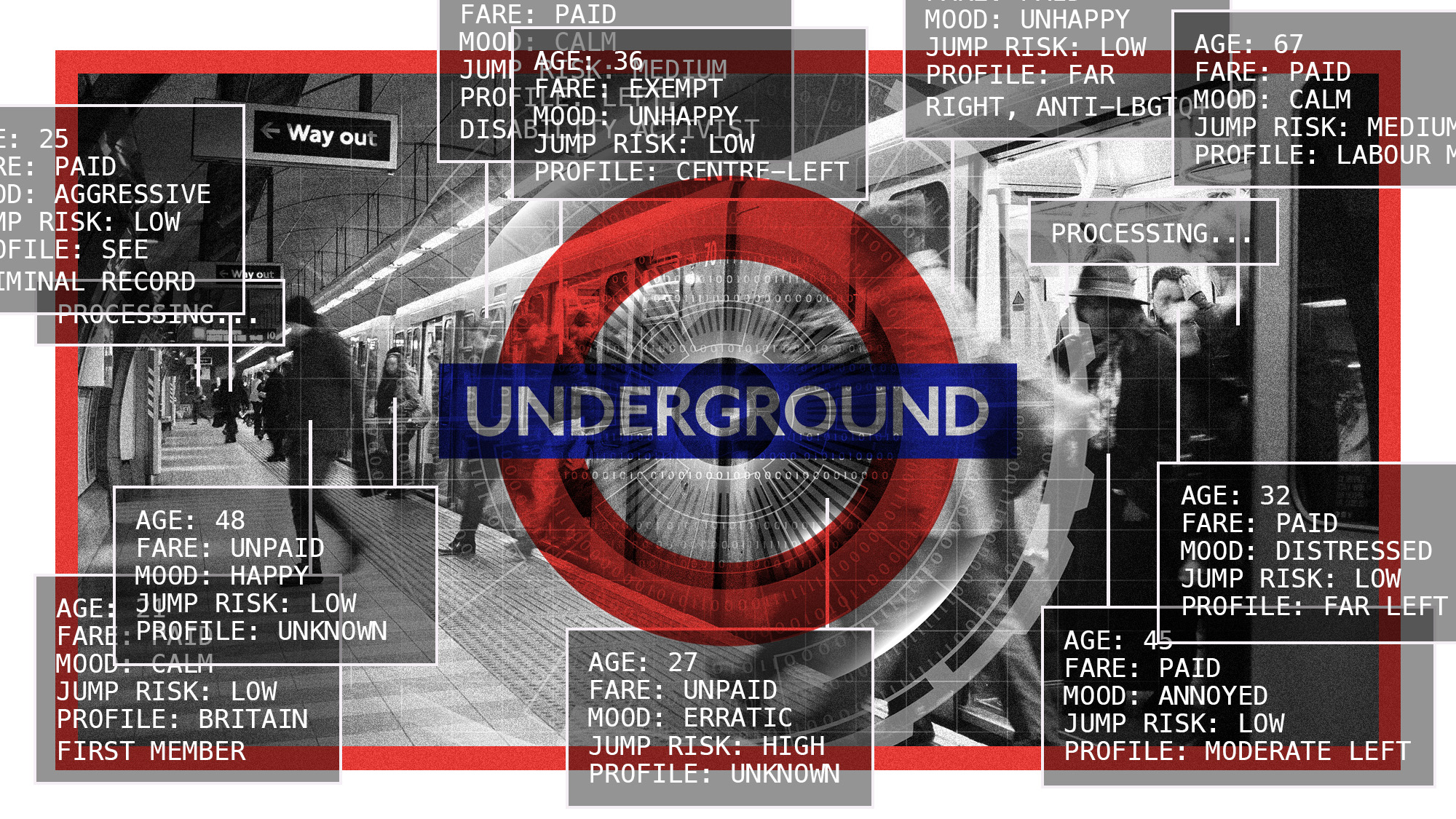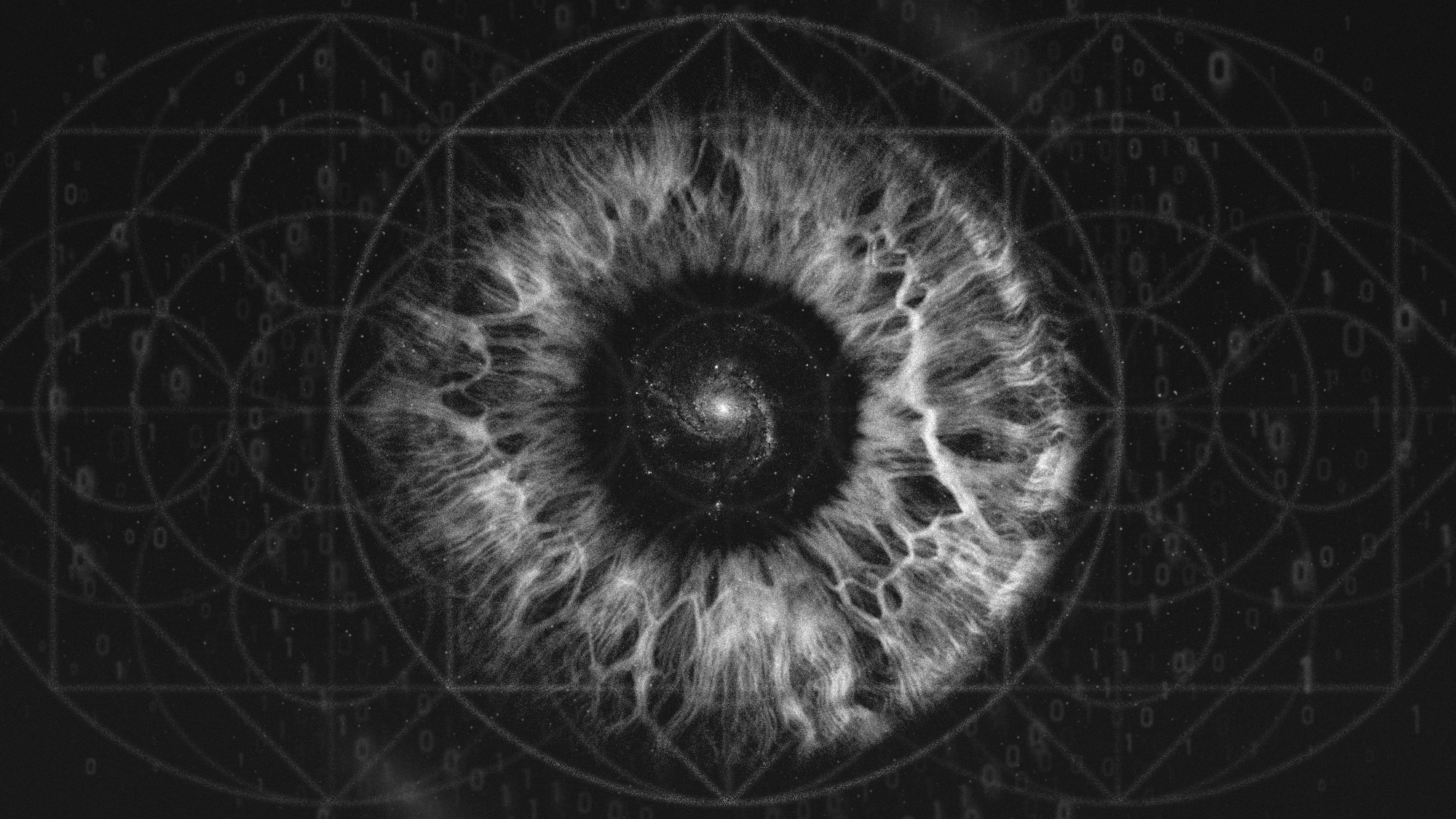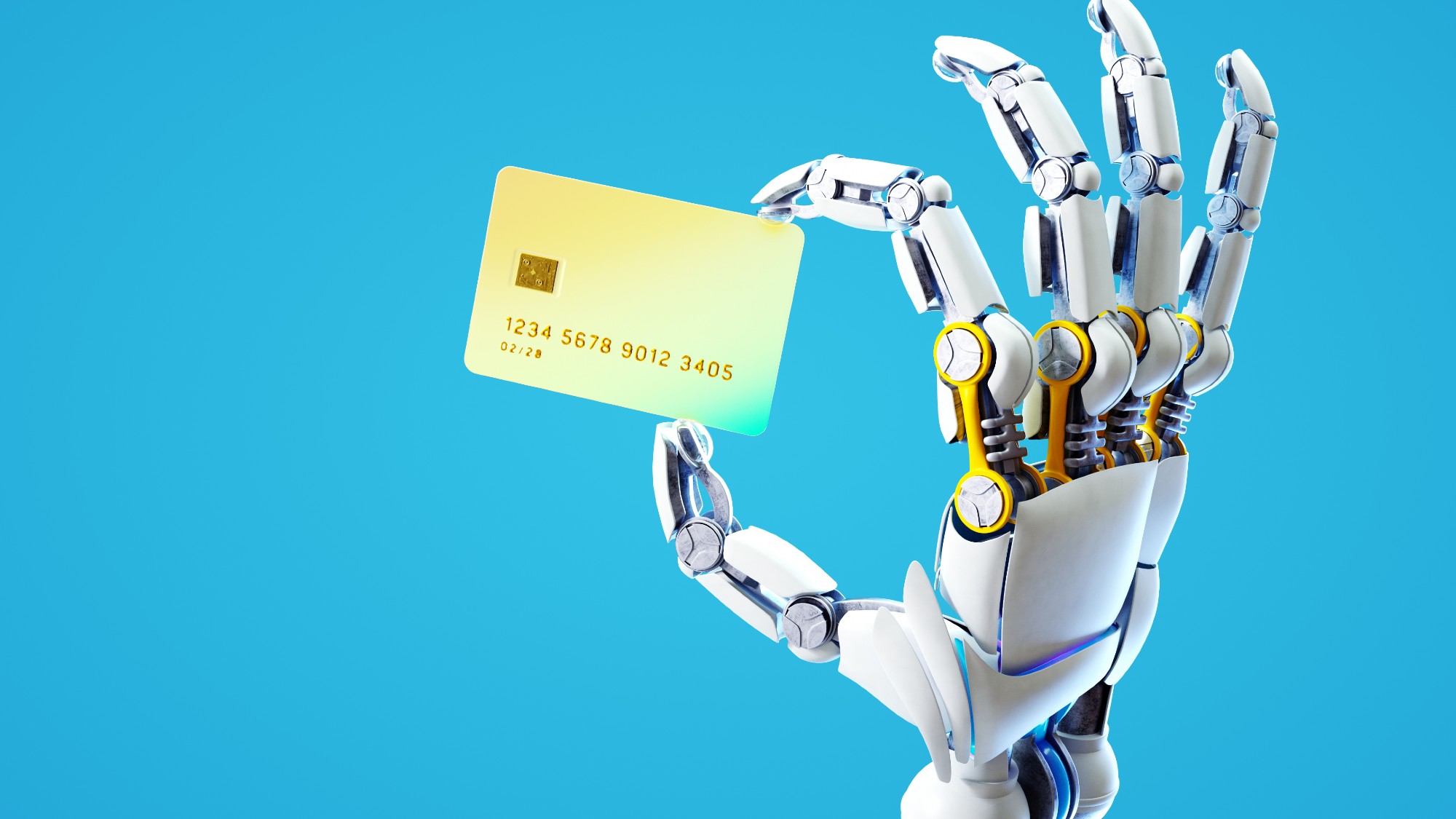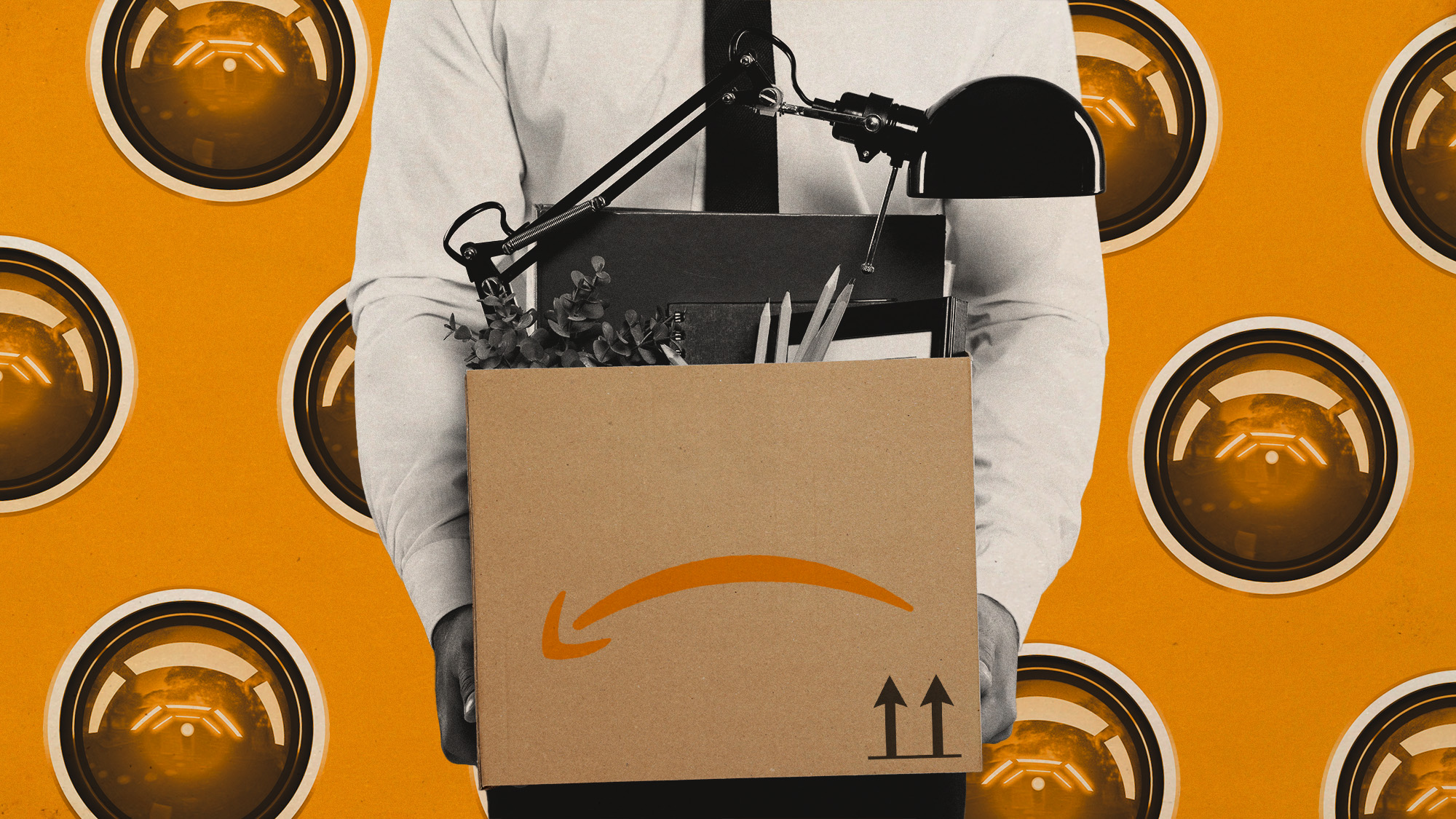How AI is used in UK train stations
Image recognition software that can track passenger emotions pits privacy concerns against efficiency and safety improvements

Thousands of passengers passing through some of the UK's busiest train stations have been scanned with AI cameras that can predict their age, gender and even predict their emotions.
Newly released documents from Network Rail, obtained by civil liberties group Big Brother Watch, reveal how people travelling through London Euston, London Waterloo, Manchester Piccadilly, Leeds and other smaller stations have had their faces scanned by Amazon AI software over the past two years.
AI on UK public transport
Object recognition is a type of machine learning that can identify items in video feeds. In the case of Network Rail, AI surveillance technology was used to analyse CCTV footage to alert staff to safety incidents, reduce fare dodging and make stations more efficient.
The Week
Escape your echo chamber. Get the facts behind the news, plus analysis from multiple perspectives.

Sign up for The Week's Free Newsletters
From our morning news briefing to a weekly Good News Newsletter, get the best of The Week delivered directly to your inbox.
From our morning news briefing to a weekly Good News Newsletter, get the best of The Week delivered directly to your inbox.
Transport for London (TfL) has also trialled cameras enabled with AI and the results are "startling", said James O'Malley in The House magazine, "revealing the potential, both good and bad".
According to Freedom of Information (FoI) requests, a two-week trial in 2019 explored whether a special AI camera trained at ticket barriers could monitor whether more people were queuing to enter or to exit the station and automatically switch the direction of barriers. The result was an increase in passenger throughput by as much as 30%, and an up to 90% reduction in queue times.
An even more ambitious recent trial at Willesden Green in northwest London used AI software tapped into the CCTV feed to transform it into a "smart station" capable of spotting up to 77 different "use cases". These ranged from discarded newspapers to people standing too close to the platform edge and they were used to help reduce fare evasion and alert staff to aggressive behaviour.
Dangers of 'emotional AI'
One of the most eye-catching sections of the Network Rail documents described how Amazon's Rekognition system, which allows face and object analysis, was deployed to "predict travellers' age, gender, and potential emotions – with the suggestion that the data could be used in advertising systems in the future", said Wired.
A free daily email with the biggest news stories of the day – and the best features from TheWeek.com
The documents said that the AI's capability to classify facial expressions such as happy or angry could be used to perceive customer satisfaction, and that "this data could be utilised to maximum advertising and retail revenue".
AI researchers have "frequently warned that using the technology to detect emotions is unreliable", said Wired.
"Because of the subjective nature of emotions, emotional AI is especially prone to bias," said Harvard Business Review. AI is often also "not sophisticated enough to understand cultural differences in expressing and reading emotions, making it harder to draw accurate conclusions".
The use of AI to read emotions is a "slippery slope", Carissa Véliz, an associate professor of psychology at the Institute for Ethics in AI, University of Oxford, told Wired.
Expanding surveillance responds to an "instinctive" drive, she said. "Human beings like seeing more, seeing further. But surveillance leads to control, and control to a loss of freedom that threatens liberal democracies."
AI-powered "smart stations" could make the passenger experience "safer, cleaner and more efficient", said O'Malley, but the use of image recognition calls for a delicate balance of "protecting rights with convenience and efficiency".
For example, he said, "there's no technological reason why these sorts of cameras couldn't be used to identify individuals using facial recognition – or to spot certain political symbols".
-
 Who is fuelling the flames of antisemitism in Australia?
Who is fuelling the flames of antisemitism in Australia?Today’s Big Question Deadly Bondi Beach attack the result of ‘permissive environment’ where warning signs were ‘too often left unchecked’
-
 Bulgaria is the latest government to fall amid mass protests
Bulgaria is the latest government to fall amid mass protestsThe Explainer The country’s prime minister resigned as part of the fallout
-
 Codeword: December 15, 2025
Codeword: December 15, 2025The daily codeword puzzle from The Week
-
 Separating the real from the fake: tips for spotting AI slop
Separating the real from the fake: tips for spotting AI slopThe Week Recommends Advanced AI may have made slop videos harder to spot, but experts say it’s still possible to detect them
-
 Inside a Black community’s fight against Elon Musk’s supercomputer
Inside a Black community’s fight against Elon Musk’s supercomputerUnder the radar Pollution from Colossal looms over a small Southern town, potentially exacerbating health concerns
-
 Poems can force AI to reveal how to make nuclear weapons
Poems can force AI to reveal how to make nuclear weaponsUnder The Radar ‘Adversarial poems’ are convincing AI models to go beyond safety limits
-
 Spiralism is the new cult AI users are falling into
Spiralism is the new cult AI users are falling intoUnder the radar Technology is taking a turn
-
 AI agents: When bots browse the web
AI agents: When bots browse the webfeature Letting robots do the shopping
-
 Microsoft pursues digital intelligence ‘aligned to human values’ in shift from OpenAI
Microsoft pursues digital intelligence ‘aligned to human values’ in shift from OpenAIUNDER THE RADAR The iconic tech giant is jumping into the AI game with a bold new initiative designed to place people first in the search for digital intelligence
-
 Is AI to blame for recent job cuts?
Is AI to blame for recent job cuts?Today’s Big Question Numerous companies have called out AI for being the reason for the culling
-
 ‘Deskilling’: a dangerous side effect of AI use
‘Deskilling’: a dangerous side effect of AI useThe explainer Workers are increasingly reliant on the new technology